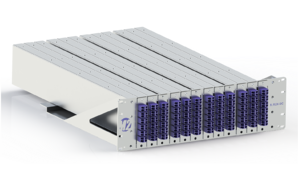With the explosive growth of global bandwidth demand, data centers and service providers have been busy adding new fiber optic infrastructure, and interconnections, and upgrading their systems and hardware to update faster technologies. As part of this, latency and optical signal synchronization are key factors that the engineering team must manage in order to maximize performance and support customers in different industries.
One of the methods to solve the signal timing problem is to use optical time delay. These fiber delays allow engineers to fine-tune the system in incremental time slices (usually as short as nanoseconds), but the key is to deploy them in the most effective and efficient way. What drives the need for balance and synchronization?
1. Fulfill contractual obligations
When data centers enter service level agreements (SLAs), they promise to deliver specific levels of performance (including latency), especially when supporting time-sensitive entities such as stock exchanges, banks, and high-frequency traders. Since customers pay for a specific delay value, they are expected to receive the same level of performance and throughput as other users paying for the same service (ie, one entity will not have an advantage over another).
Considering that the equipment is usually located in different racks or locations in the data center, meeting the SLA and equalizing the latency of all customers on the service is a major challenge. To help overcome this challenge, the use of optical time delay to balance all applicable Fiberlink is a useful element in the overall solution (Note: other factors such as structured wiring, gears/hardware itself, all networks that cause delays, etc., must also be used as a total solution. Management solutions).
2. Differences in installation network technology/equipment
As the technology develops, the engineering team selects and deploys updated equipment as part of the fiber optic infrastructure. This is usually done in stages, rather than all at the same time. Due to the performance difference between the new system and the co-working legacy system, signal timing/synchronization and subsequent delay effects are important issues that needs to be resolved. As the system adjusts, deploying optical time delays to match the time is a method, and these time barriers can be overcome.
3. Compliance with regulatory requirements
Similar to the SLA between a data center and its customers, government and regulatory measures can also promote a balanced demand for service provision. As an example of the European Union, the recent Financial Instruments Market Directive (MiFID) outlines the requirements for transparency and disclosure of information for companies operating in the European Union.
The MiFID II reform legislation outlines that financial “transaction custody services…are fair and non-discriminatory, and will not create incentives for disorderly trading conditions or market abuse.” In other words, the goal is to ensure a more fair and transparent financial transaction market. Part of meeting these needs in data centers or financial institutions includes providing balanced links for all traders on the same platform.
4. “DIY” solutions are time-consuming and inefficient
In order to solve these problems, some data centers have adopted the method of establishing temporary settings in the facilities instead of looking for partners specializing in this field. Although it may be effective at first, in general, these methods are not designed to be efficient and scalable. In addition, as has been seen in recent years, constant changes in the market and technology have led to demands for higher precision, performance, and space efficiency.
Building a customized optical delay solution with high precision is not a simple task-it requires advanced manufacturing and testing equipment, experienced personnel, professional processes, and a lot of time, especially with the complexity of Increase. The self-built settings that were effective a few years ago may not even compare to what is needed to deliver the expected results now, and eventually become a costly service that customers may need as part of their network.
5. M2 Optics-a professional partner you can trust
With the announcement of the recently patented Fiber Lab Flex DC, M2 Optics now provides engineering teams with the highest-density, fully customizable platform that needs to deploy optical delays to balance link delays or solve these related key system applications. Working with M2 means that engineers can rely on effective methods to quickly deploy optical time delays without having to waste time and cost on a poor-quality or unproven method.
This 3RU rack chassis accommodates up to 12 high-density modules, and each module accommodates up to 12 fiber optic delay spools, for a total of 144-time delays. In addition to saving a lot of rack space, it also allows users to easily add, reconfigure and control settings as their business and customer needs evolve. To meet today’s demanding requirements, each time delay can be built with sub-nanosecond accuracy, providing an unparalleled level of performance.




